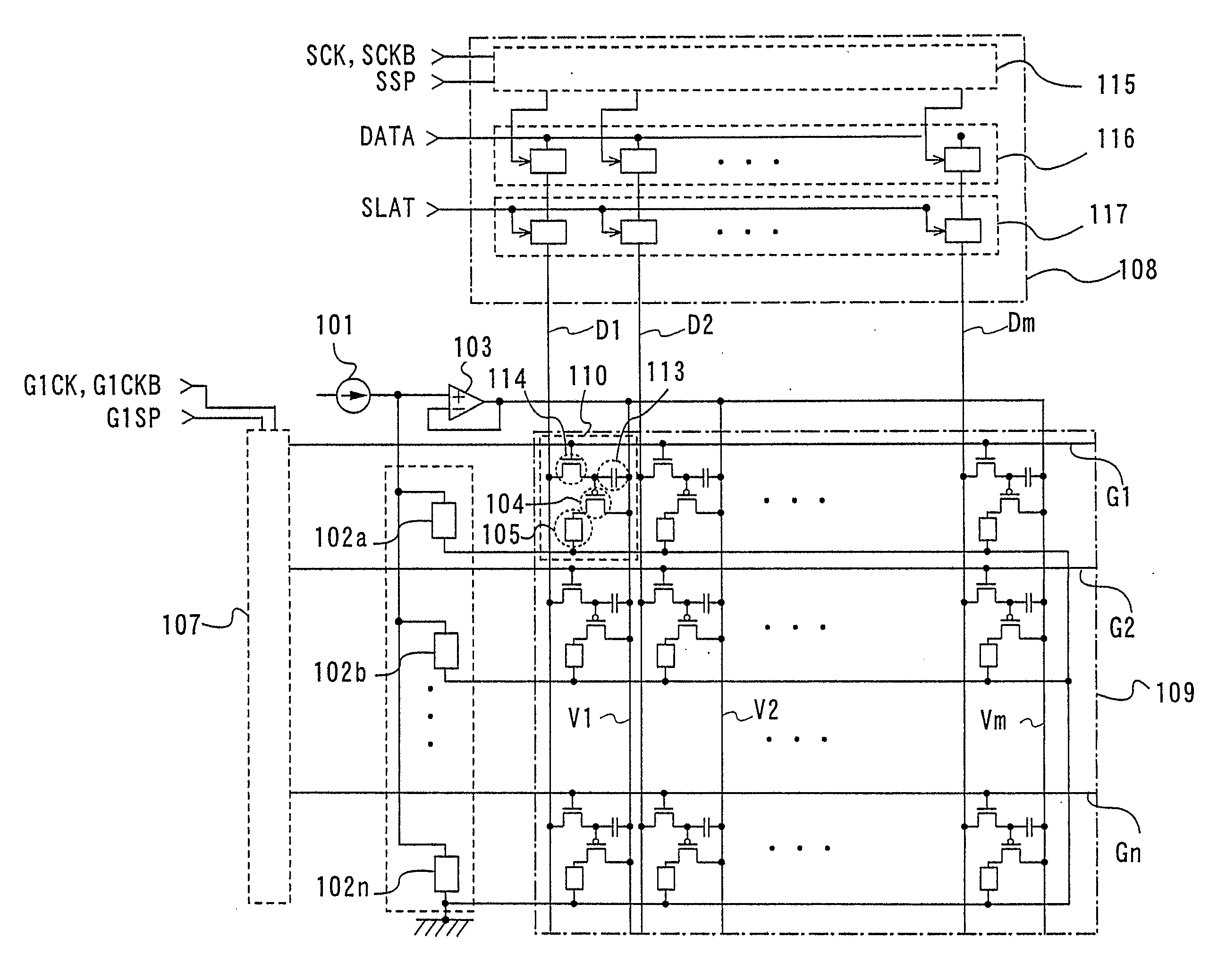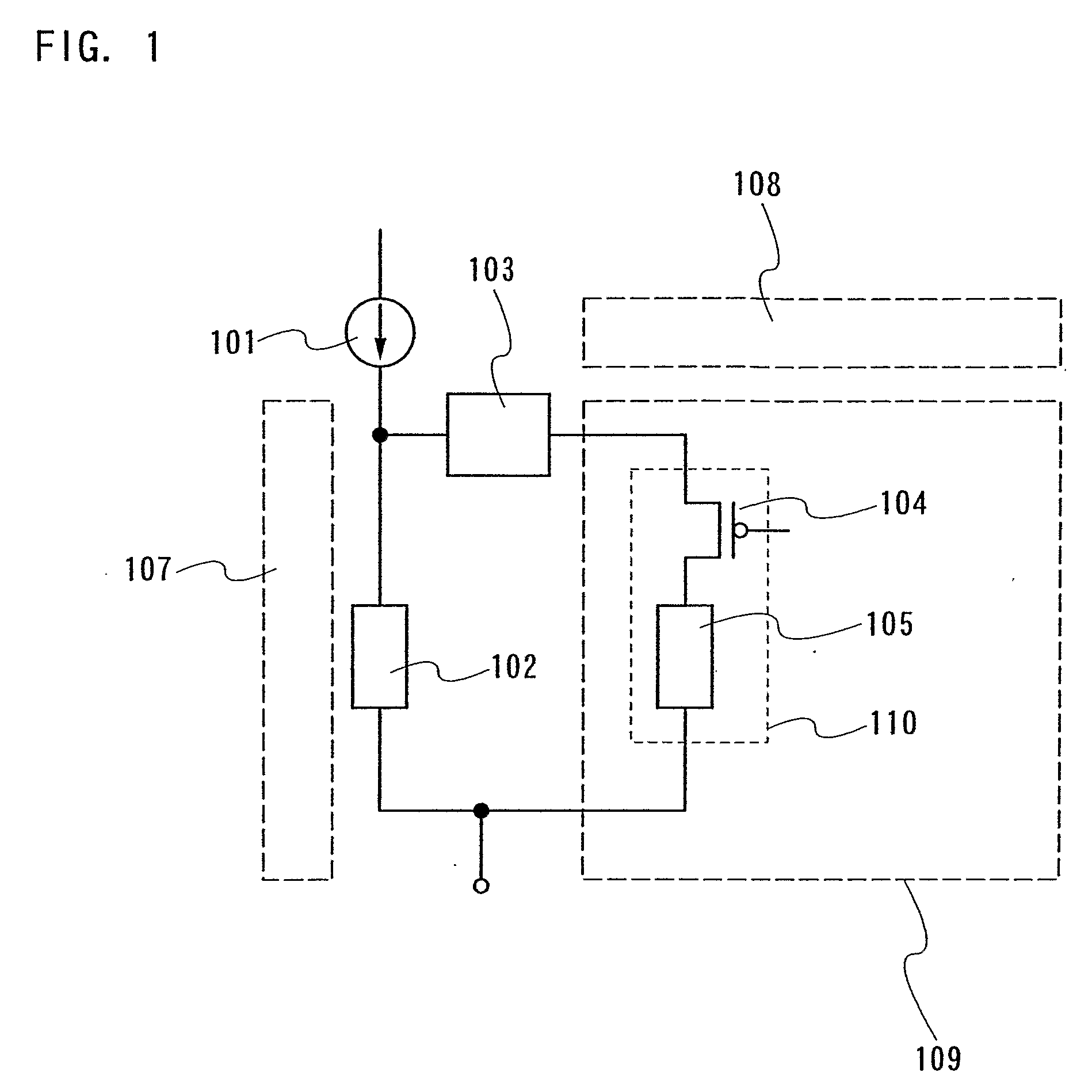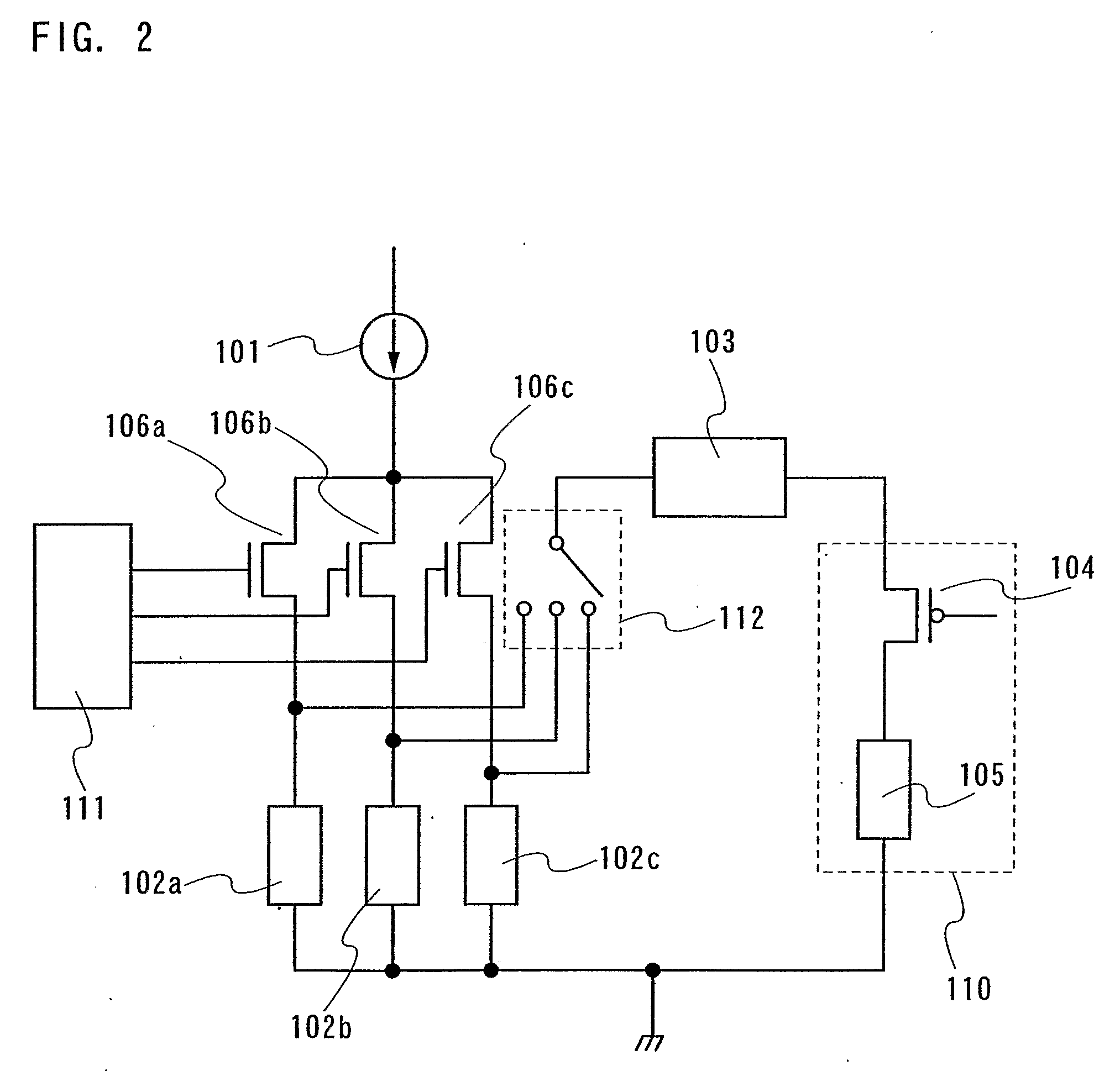Display device and driving method thereof
a technology of a display device and a driving method, which is applied in the direction of static indicating devices, instruments, etc., can solve the problems of inability to accurately correct changes in luminance, increase in size, and inability to maintain constant luminance of a display light emitting element, so as to achieve the effect of ensuring constant luminance, easy configuration and accurate correction of changes in luminan
- Summary
- Abstract
- Description
- Claims
- Application Information
AI Technical Summary
Benefits of technology
Problems solved by technology
Method used
Image
Examples
embodiment 1
[0119] An example of a display device provided with a monitoring light emitting element and performing the CL drive is described with reference to FIG. 7.
[0120] A display device shown in FIG. 7 includes the scan line driver circuit 107, the data line driver circuit 108 and the display portion 109. The display portion 109 includes the pixel 110 where a switching transistor 114, the driving transistor 104, a capacitor 113, and the displaying light emitting element 105 are provided.
[0121] The data line driver circuit 108 includes a pulse output circuit 115, a first latch circuit 116 and a second latch circuit 117. In this data line driver circuit 108, data can be outputted from the second latch circuit 117 at the same time as data is inputted to the first latch circuit 116.
[0122] The display portion 109 includes scan lines G1 to Gn connected to the scan line driver circuit 107 and data signal lines D1 to Dm connected to the data line driver circuit 108. The scan line G1 to which a s...
embodiment 2
[0133] This embodiment shows another configuration example of a display device performing the CL drive by combining a monitoring light emitting element and a displaying light emitting element.
[0134] In this embodiment, the amount of current, namely the amount of charge of a monitoring light emitting element is determined taking into consideration the average lighting period of a displaying light emitting element in a pixel. It is experimentally known that the average ratio of a lighting period to a non-lighting period of a displaying light emitting element in each pixel is 3:7. By adjusting a lighting period of the monitoring light emitting element, the amount of charge Qm of the monitoring light emitting element and the amount of charge Qp of the displaying light emitting element can be controlled so that g(Qp) / g(Qm) is close to exp{(k·t)η} as represented by the formula (12). The duty ratio of the monitoring light emitting element may be set to 50 to 100%.
[0135]FIG. 10 shows an e...
embodiment 3
[0142] This embodiment shows a configuration example of a display device performing the CL drive by combining a monitoring light emitting element and a displaying light emitting element, where a correction function of the monitoring light emitting element can be maintained for a long time.
[0143]FIG. 11 shows an example of a compensation circuit for correcting degradation with time of a monitoring light emitting element. This compensation circuit includes the current source 101, the monitoring light emitting element 102a, the monitoring light emitting element 102b, the voltage generating circuit 103, and a switch circuit 126 having a switch 126a and a switch 126b. The output of the voltage generating circuit 103 is inputted to the displaying light emitting element 105 through the driving transistor 104.
[0144] The switch 126a and the switch 126b switch a connection with the current source 101 between the monitoring light emitting element 102a and the monitoring light emitting elemen...
PUM
 Login to View More
Login to View More Abstract
Description
Claims
Application Information
 Login to View More
Login to View More - R&D
- Intellectual Property
- Life Sciences
- Materials
- Tech Scout
- Unparalleled Data Quality
- Higher Quality Content
- 60% Fewer Hallucinations
Browse by: Latest US Patents, China's latest patents, Technical Efficacy Thesaurus, Application Domain, Technology Topic, Popular Technical Reports.
© 2025 PatSnap. All rights reserved.Legal|Privacy policy|Modern Slavery Act Transparency Statement|Sitemap|About US| Contact US: help@patsnap.com



